Queen’s Park candidates explain why they want to be a councillor. They also answer questions sent in by the public via social media.
Not your ward? Click here to find your neighbourhood on our interactive map.
Eleven candidates are standing for the three Brighton and Hove City Council seats in the Brighton ward of Queen’s Park.
Why do you want to be a councillor?
Lucy Agace is a sustainability consultant/auditor standing for the Green Party:

I believe the time is now to start changing the way we live and the way we run cities, businesses and countries. If we don’t act now, we will lose so much of what we take for granted. I see the need for new strategies regarding waste management, recycling, homelessness and housing. If we take care of our environment in a sustainable way, by linking social, environmental and cultural development, we can make a difference. I am standing for election to make that difference.
Nick Childs is a trade union official standing for Labour:
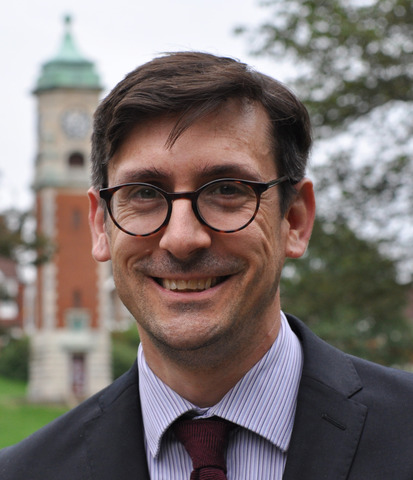
I am a local resident and full-time trade union official working in education across the city. My priorities are fighting child poverty, addressing the climate emergency, affordable housing and improved education.
Amanda Evans is standing for Labour:

I am a local resident and a lifelong socialist. Tackling homelessness and poor housing will be my priority.
Martin Farley is a project manager standing for the Green Party:
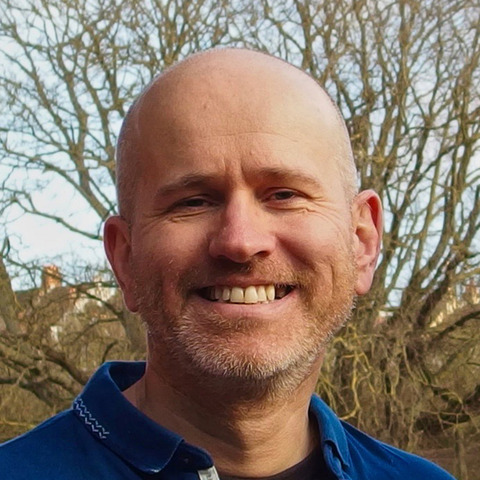
I would like to be able to contribute to improving my city and local area in particular and would love the opportunity to engage local people in that process. I also think it is important that the most immediate point of call in government that residents have are people who really care about our local environment in its totality and that means the air we breathe, the water we drink, how we work, live and play and the waste and pollution we produce. As a local councillor I would have the opportunity to provide that support.
Lee Farmer is a magistrate and an account manager at American Express. He is standing for the Conservatives:
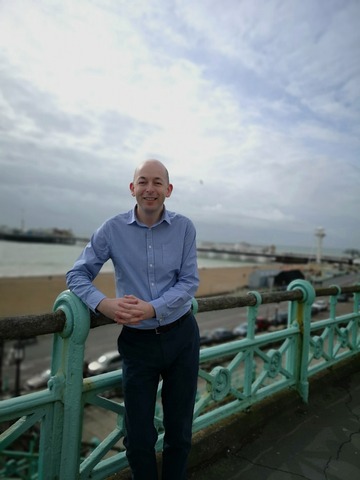
Brighton is a great city. Diverse. Welcoming. Stimulating. However, we also have great challenges which need to be properly addressed. These range from crumbling heritage buildings to overflowing bins, anti-social behaviour to inadequate housing. I would like to play my part in finding long-lasting solutions.
Adrian Hart is a writer standing as an Independent:
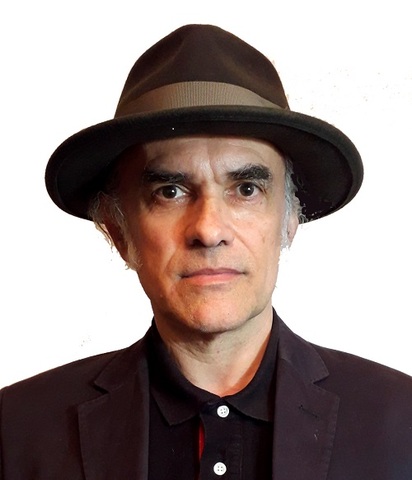
We need candidates who are not party political. Badly let down by its councillors, people need at least one who sticks up for the residents. For example, the tenants of Milner Flats (and those close by) have suffered 16 months of nightmarish conditions at Circus Street. I hope the new councillors act as fierce advocates for their constituents. I will continue my involvement in building neighbourhoods and getting stuff done but as a ward councillor I would be sure to act as a councillor should: a forward lookout who raises the alert on bad ideas before it’s too late to challenge them.
James Noble is a researcher in biochemistry standing for the Conservatives:
Living and growing up in Brighton and Hove, I love this city. I cannot let extremist left-wing elements in Labour take control of our city. Conservatives have a sustainable, financially sound approach to running our city, so I chose to stand as a Conservative candidate. Green and Labour groups have run our city these past eight years and everything has gone dramatically downhill. Graffiti and litter are worse than ever. Our city needs tourism and people do not want to come to a city that is a mess with its heritage, like the Madeira Arches, rotting away.
Josephine O’Carroll is retired after serving in the RAF and working as a senior systems engineer. She is standing for the Conservatives:

Having had two good careers, I feel it is time to give something back to society and that being a councillor is the best way to do that. Secondly, having seen Momentum take control of the local Labour Party and having seen how Liverpool suffered under Militant in the 1980s, I felt I had to try to stop them doing the same to Brighton.
Colin Piper works for the Institute of Physics and is standing for Labour:

I work for the Institute of Physics, supporting physics teaching in Sussex. I first joined the Labour Party in 1976 and have a lifetime interest in conservation and the environment, international development and science education. I have lived in Queen’s Park since 2003 and love this part of Brighton.
Clare Rainey is a graphic designer standing for the Green Party:
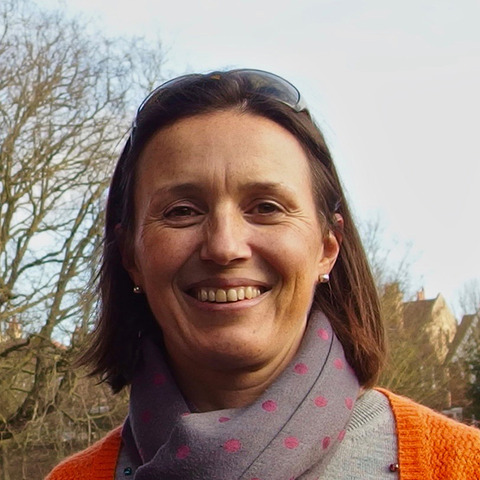
I care passionately about this city and want to help all the residents in Queen’s Park ward to enjoy living here as much as I do.I have lived in Queen’s Park ward for nearly 17 years and have brought my children up here so I understand the issues and concerns of local residents as well as those facing the city as a whole. I have a long-established commitment to environmental sustainability and feel there is a lot that can be done in Brighton to improve our environmental impact and to improve the lives of residents and the experience of our many visitors.
George Taylor is standing for the Liberal Democrats:
I am a young local resident and have lived in this ward my entire life. I stood in the 2018 East Brighton by-election and now I want to bring that experience to my home ward. Growing up here I have been able to see first hand the problems with our ward that have not been dealt with for many years.
What are you views on the design and impact on traffic of the Valley Gardens phase 3 project in Old Steine which includes making Madeira Drive one-way by the Palace Pier?
Lucy Agace, Martin Farley and Clare Rainey: Due to Labour delaying implementation of the scheme, phase 3 has been rushed and people feel that consultation has been inadequate. However, it will make it safer and more pleasant to come into town on foot, bike or bus so, like the majority of respondents to the consultation, we do support the overall scheme.
We believe it is hugely important to have green “breathing” spaces in a city, providing safe places for children to play, people to congregate and enjoying being outside. We also accept that the council still has some work to do to explain how five lanes of traffic will fit into a space currently containing just three lanes and what effect that will have on air quality on the east side of Old Steine.
Nick Childs, Amanda Evans and Colin Piper: The designs are currently being drawn up to a detailed design stage. All comments and issues raised are being addressed and we hope to see a detailed scheme which meets the needs of all residents and businesses/visitors expected. Those detailed designs will have to ensure that the city keeps moving while addressing the impacts of the climate change emergency and supporting a modern city where sustainable transport routes are protected and enhanced.
Lee Farmer: Residents and local businesses have not properly been consulted on the Valley Gardens phase 3 project. Even the name has caused problems as most people in the city were not even aware this meant major changes to the Old Steine. The Conservatives want a pause in any future development to fully investigate the pros and cons of proceeding as planned.
Adrian Hart: Suitable on the west side of the new-look Valley Gardens perhaps but not on the east side. Communities and businesses to the east will be annexed and ghettoised by doubled-up traffic jams. The removal (rather than upgrade) of the roundabout is pure folly and there’s no better explanation of this than taxi driver and GMB rep Andy Peters’s video on Latest TV. Consultation was terrible. Labour and Greens like rabbits in headlights. You do not reduce traffic by “nudge” politics, making driving a nightmare, and especially not with train and bus alternatives so defective. Council must listen. This is a bad decision.
James Noble: The current plans will increase traffic, waiting times and pollution. They include removal of the Aquarium roundabout, replacing it with traffic lights and five lanes of traffic going down one side of the Old Steine. This means pavements will be narrowed and pedestrians will have five lanes of traffic to cross. My view is that proper consultation is needed. Residents and businesses must be actively involved in the design process. This is another reason I want to be your councillor and why I presented a 1,400-strong petition to council executives calling for honest, open and genuine consultation.
Josephine O’Carroll: Valley Gardens phase 3 suffers from having had far to little consultation with the local business community and residents. Major concerns exist over trying to squeeze so many lanes of traffic down the east side and the plans for Madeira Drive and Duke’s Mound will also cause traffic to use the side streets as rat runs with increased risk. It needs to be paused and reviewed.
There is a huge problem with dog owners leaving waste behind, either in bags or just out in the open in parks and street. What will you do to tackle dog owners not picking up poo?
Lucy Agace, Martin Farley and Clare Rainey: We would like to see more litter bins and the introduction of dog mess bins and perhaps dog mess bag dispensers. Better enforcement of fines for people who do not pick up mess left by their dogs as well as general littering but there clearly also needs to be more investment in street cleaning across the city.
Nick Childs, Amanda Evans and Colin Piper: Our new enforcement officers who have been brought in-house are out and about in neighbourhoods and targeting those whose anti-social behaviours are affecting all our lives. We need to both educate and enforce our way out of this problem and we want that message to get through to all who choose to leave dog mess across our city.
Lee Farmer: We need to enforce the regulations that currently exist where owners can receive fixed penalty notices for allowing their dogs to foul public areas.
Adrian Hart: I do not think there’s a huge problem in Queen’s Park ward. Lately I have walked every street and road in the ward and I think I saw evidence of this twice. However, I would not wish to belittle the question. Too many councillors dismiss such grievances as trivial compared to their party political focus. They should take note, properly assess and verify constituent concerns. Always.
James Noble: On the spot fines must be implemented. A period of zero tolerance will send a clear message that we must all take responsibility for the mess we create. We could increase the fines to further deter offenders, if evidence proves this to be effective. We can look at how enforcement teams are deployed and how resources are divided across our city so that residents in Queen’s Park are not neglected.
Josephine O’Carroll: The council is empowered to levy a fine of £75 for each offence but the number of those issued each year averages less than five. Seafront staff, parks staff and local PCSOs can fixed penalty notices. I would seek to have the regulations more rigorously enforced.
The council is planning more electric vehicle charging points. To what extent do you support this and will you commit to electric vehicle only parking spaces?
Lucy Agace, Martin Farley and Clare Rainey: We would be fully behind this proposal and it is in keeping with our Green values, cutting CO2 emissions and paving the way for cleaner electric vehicles. But we need to ensure the charging points are installed in appropriate spaces (ie, do not block pavements).
Nick Childs, Amanda Evans and Colin Piper: We fully support the installation of electric vehicle charging points (EVCPs) and in fact it is the Labour council that successfully bid for £300,000 funding from the government to allow the installation of 200 EVCPs. Test sites are already in operation.
It was noted at committee last June that the scheme might need to allow for mandatory parking bays for electric vehicle charging in the event, for example, it becomes clear that electric vehicle owners are having problems accessing advisory bays or to adapting over time to increased demand.
Lee Farmer: This is excellent. Anything to improve the air quality in Brighton and reduce pollution has to be encouraged. We have a huge issue with parking in the city and car users have often been seen as the enemy. I would hope our lacklustre approach to park-and-ride schemes can be improved.
Adrian Hart: I support the installation of electric charging points (100 per cent) but roll them out in parallel with affordable electric cars coming on-stream (16 million Britons can’t afford these cars). Don’t punish car drivers who can’t afford electric.
James Noble: Electric cars are the future and our city should be a leader in the roll-out of green technology. Conservatives electrified the city when they introduced the first of these charging points. Our streets are some of the most polluted in the UK (outside of London) and the proposed Valley Gardens scheme will add to this problem.
Moving to electric vehicles can help safeguard the health of residents in the city. As electric cars become more affordable and commonplace, having electric vehicle only parking spaces may be a good way of encouraging people to get rid of their old polluting cars.
Josephine O’Carroll: The roll-out of electric charging points is to be encouraged and it would be counterproductive to then have them obstructed but that includes by already charged electric vehicles. It would seem preferable to make them fast-charge points with a limited stay time to allow a recharge and no return with a further fixed period.
If you design with children in mind, you also make it good for older people and create a healthier and more inclusive place that everyone can enjoy. How are you going to make the city safe and attractive for children to move around independently?
Lucy Agace, Martin Farley and Clare Rainey: Improving pedestrian routes, road crossings, cycle routes and bus services all make the city safer and easier for children, older people and others with mobility difficulties to navigate.
We would also like to see better enforcement of speed restrictions on our roads. Cars are the number one cause of death and serious injury for children and young people and we would like to see our streets made as safe as possible for everyone.
In addition, tackling anti-social behaviour and drug-related activity give children, parents and older people more confidence that moving around the city independently is safe.
Nick Childs, Amanda Evans and Colin Piper: We need a range of measures to be delivered across the whole city. Better protected cycling and walking routes are key to this as well as a safe reliable public transport system. We are also committed to setting up a fund to support improved community safety and neighbourhood policing measures to give people confidence in the safety and responsiveness of their local communities.
Lee Farmer: I want to be elected to a council that makes the city safe and attractive for all its residents. Children already receive reduced fares on our buses and should be encouraged to take advantage of this and also to cycle where appropriate to improve their physical health. I think our older residents are often overlooked and I would hope to address issues of loneliness and isolation among our senior citizens.
Adrian Hart: Last year our neighbourhood group campaigned for a “green” footbridge across Edward Street. No council officer/councillor/planner interested – not one. My son is now 15. Two years ago he made his usual five-minute trip from our home to where his best mate lives. He got approached by a woman pleading to borrow his phone for an emergency call. His phone was then passed to man who ran. I was walking up the road, saw it all and got the phone back. This kind of stuff happens to kids a lot. They soon learn. I will battle for a safe city.
James Noble: Adequate crossing points around schools and busy junctions is important for the safety of both children and the elderly. Having an easy to access, frequent and far-reaching public transport system means children and older people have a safe way of moving around independently.
A huge threat to our children’s safety is the large amount of discarded drug paraphernalia. This must be tackled. Clean and drug-free parks, with park gyms suitable for children and the elderly, will improve well being for all ages. The compatibility of our cycle lanes, roads and pavements is essential so the safety of all users is improved.
Josephine O’Carroll: Research, and frankly common sense, shows that the major danger for children is traffic when they are on the mobile phones. The Transport Safety Laboratory pavement recommend kerb stops signs and Dutch towns are introducing red/green pavement embedded LED strips. These should be explored.
Toilets in the city parks are a disgrace and particularly unhygienic for young children and women. We need more public toilets in the city. What is your commitment to people who need a loo?
Lucy Agace, Martin Farley and Clare Rainey: Many public services have fallen into disrepair in recent years as a result of severe government budget cuts, public toilets being an obvious example. They are especially important for the elderly, disabled, pregnant women and people with children and we need to find ways to ensure access to clean, functioning toilets for everyone. Some councils have encouraged businesses to allow members of the public with particular needs to use their toilets, for example, so we would like to explore such options.
Nick Childs, Amanda Evans and Colin Piper: We have established a capital fund to renovate and update all of the public toilets across the city through a shared scheme. As a city we have retained many public toilets where other cities have reduced or even removed the provision entirely. We will continue this innovative programme to bring our toilets up to 21st century standards.
Lee Farmer: Public toilets are often one of the first amenities to be cut when a council is trying to save money but of course they are an essential service for both residents and visitors. There is a lack of investment in building new facilities and indeed maintaining current ones. I would hope to reverse this trend.
I also think we need to make our local businesses more aware of the needs of our local population and encourage them to allow their own facilities to be used even by non-paying customers. Perhaps some sort of tax break or incentive could be offered to those who take part?
Adrian Hart: Elected or not, the commitment of myself/my group (Amex Area Neighbourhood Action Forum) is to fight for a city budget that addresses wastage and refrains from vanity projects and actually creates (rather than cuts) posts such as that of a regular cleaner. Having toilets returned to Queen’s Park was a good step but is it beyond the wit of BHCC (Brighton and Hove City Council) to maintain them? Come on BHCC no more vanity projects until this basic stuff is sorted out.
James Noble: Many of our public toilets have become drug dens, particularly in our parks. Years of mismanagement have left them unhygienic and drug needles make them unsafe. I would like to see more investment so modern, clean and drug-free facilities can be available to everyone. The “adopt a loo” scheme works well in other areas and I would like to see revenue streams from businesses in return for advertising or sponsorship. This revenue could fund modernisation and ongoing maintenance, easing the burden on taxpayers and stopping anyone being caught short. Fines for public urination could also be used.
Josephine O’Carroll: The Queen’s Park ward has a lack of public toilets. The next nearest to that in Queen’s Park itself is in the Colonnade in Madeira Drive. I cannot commit to be able to provide more but will work to ensure the ones we have are kept clean and open – plus investigate making those in public-owned buildings accessible where possible.
There are drug users and dealers hanging around Queen’s Park. What would you do to tackle the problem?
Lucy Agace, Martin Farley and Clare Rainey: Drug use and drug dealing is due to a complex range of issues, including homelessness, mental health problems and lack of youth services. We would make tackling homelessness, supporting local health services and reduced youth services a priority. We would also lobby for an increased police presence in Queen’s Park and would support improved lighting and relandscaping as proposed by the Friends of Queen’s Park community group.
Nick Childs, Amanda Evans and Colin Piper: We would continue the good work of the current Labour councillors. They have worked closely with the Community Safety Forum and other local agencies to keep tackling these problems for residents. Their advice is to report concerns, if not an immediate risk or emergency, via 101@sussex.pnn.police.uk so the police have an accurate picture. If you witness injecting or open drug dealing, you can report this on 999 as it warrants a higher-level response. Dealing with drug litter is a high priority for Cityclean. Please use the online form on the council website or ring 01273 292929.
Lee Farmer: This is a serious issue that has been raised repeatedly on the doorsteps as we have chatted with local residents. Lighting needs to be improved in the park to discourage anti-social behaviour and we need to have more regular uniformed patrols. Those found guilty of using or dealing need to be properly dealt with by the courts or have access to treatment programmes for mental health issues or addictions. These are available in the city, albeit heavily oversubscribed.
Adrian Hart: At root, the market for class A drugs arises from an escapist culture where people feel their lives have no purpose. The trade that we are seeing in a great many locations across the ward is extremely resilient to police crackdowns and seizures. I would tackle the problem by calling for an end to all the knee-jerk “we need a crackdown” solutions (that always fail) and instead demand that our council properly review and debate existing research on this area.
Many studies tell us that criminalising drugs makes the misuse even more dangerous. The county lines phenomenon needs our attention too. The area around the garden is fairly typical of spaces used by drug dealers and users. In my experience they fall into two groups.
Firstly, usually teenagers or early twenties who want a quiet space to take their drugs – “social users”. Talking to this group is feasible. They don’t need to be told to stop but encouraged to see the impact of their activities on other users of the space.
Secondly, dealing with addicted adults and their dealers is much more difficult. Intervention is not a good idea unless you feel safe. The key point is report to police (if the incident is actually happening within sight call 999 but otherwise report on 101). This will generate a report number which should then be sent to the council.
James Noble: There is very poor lighting in Queen’s Park, this makes it more appealing to drug users and dealers at night. Installing new lighting, combined with more CCTV, will discourage this. It will allow the area to be policed more effectively and make Queen’s Park a more attractive place for residents and our children at all times. Police community support officers can work even more closely with residents and businesses around Queen’s Park, ensuring first-hand intelligence regarding individuals and illegal activity can be collated and acted upon quickly and efficiently.
Josephine O’Carroll: This is a serious problem and I am aware of the public meeting organised by the present councillors last year and the police involvement and “Operation Rattle”. I would continue to press for increased police funding for PCSOs and surveillance in the park and the surrounding area.








